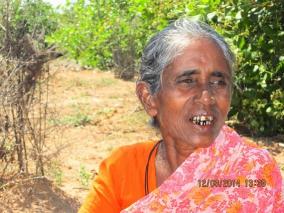WOMEN EMPOWERMENT

Having gone up to Cuddalore, a four hour road drive from Chennai, I thought of peeping into the immediate next suburb, the cashew town of Southern India- Panruti. Panruti is known for cashew and jackfruits, both of which are rare commodities with very high economic value. Panruti cashew, a globally reputed commodity, is a bright white, tasty nut with an attractive sheen and color.
Panruti bore the brunt and suffered loss of life, livelihoods, infrastructure and properties due the unforeseen high wind velocity on 30th December 2011, causing scattered destruction (coastal and inland) up to 15 Kms inside land, uprooting loads of cashew trees. The wind- induced Thane cyclone brought down coconut plantation, mango trees and cashew bushes, putting the agro based economy into jeopardy. It suffered an economic loss of Rs. 4000 crores, mainly borne out of unprecedented wind speed of 135 kms per hour.
At that time due to such a colossal damage, most people thought the whole industry is gone and would take many years to revive. Soon it limped back to normalcy, though still there are cashew bushes yet to sprout back into cashew nuts.
As I tried to understand the journey of the community towards reconstruction and revival, I decided to take a walk through the area. I saw clean and neat cashew bushes with each plant properly fenced and sufficiently spaced and, even many of the plants had been sprayed with cow dung solution to ward off being grazed by cattles.
Motcharagini is one of the Thane survivors who escaped unhurt when the wind speed uprooted an old mango plant, which fell on her home. Her husband had died many years ago, and she had to take care of six children, all of whom were young. I empathized with her when I heard her tales of struggle. At the time of her husbandÔÇÖs death, she had no money even to buy clothes and would wrap her husbandsÔÇÖ dhoti around her.
The pains of Motcharagini seems to be over now. After a need assessment, CARE India supported her with 120 nos. of quality High Yielding Variety cashew saplings (VRI ÔÇô III variety, 80 plants/ acre) which would offer a yield in 4-5 years.
CARE educated Motcharagini to plant the saplings in 7mx7m gap, with the recommended size of pits and inorganic mixtures and supported her 30 person days of work with Rs.120/- per person day for clearing the debris, bushes and preparing the land with proper ploughing and mulching. She has also been enrolled into the cashew processing unit supported by CARE India, where her skills on de-shelling and peeling of cashew nut to earn extra income. . She has received Rs 2500 as relief from Govt. and was one of the beneficiaries under cash for work initiative of CARE India which helped her to replenish the cashew plantation by herself working in her farm and still get wages.
She recalls with gratitude the training inputs given by CARE India, which helped in maintaining the right plant population because of right spacing and planting in pits of appropriate size. She says, ÔÇ£CARE India provided support at the right time, otherwise my life would have been miserable without any future income.”
I realized that reconstruction is a long term initiative, requiring us to deepen our work. It points towards the need for reconstruction initiatives, which should be built on the trajectory of relief- rehabilitation- reconstruction continuum.
R. Devaprakash,
Regional Program Director
CARE India, Chennai




